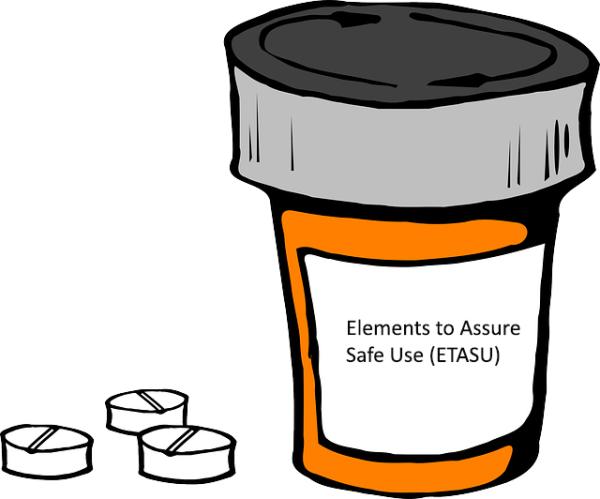To protect their revenues, and as a result, keep drug prices high, brand-name drug manufacturers have tried several means to stop or slow the entry of comparable generics. They have attempted to extend their patent protection and have even bought the generic for themselves and just not manufacturer it. One of their more insidious approaches has involved Risk Evaluation and Mitigation Strategies (REMS); specific regulatory guidelines that the FDA requires to protect patients who use drugs requiring more supervision than merely providing a prescription.
Some drugs have pronounced reasons not to be used or severe side effects that are dangerous but can be prevented or at least treated by checking laboratory values. Elements to Assure Safe Use (ETASU) are part of those disclaimers you hear on television drug ads, to “tell your doctor if you have had a liver transplant” or “your doctor may require additional blood testing.” As more new drugs involve complex administration and surveillance, especially the biologics, the FDA has rightly protected patient safety by requiring specialized training in the use of these agents, specific laboratory surveillance and in some cases registries of patients, side effects, and outcomes. These safety measures also must demonstrate that they actual safeguard patients and are not just burdensome regulation. While ETASUs are required and approved by the FDA, they are developed by the manufacturer as part of REMS.
The FDA is requiring more mitigation strategies particularly ETASU’s in the last few years. Training and certifying prescribers as well as maintaining registries is an expensive business and requires “product-specific data” that innovating manufacturer considers their intellectual property; property they are unwilling to share with generic manufacturers. Brand name manufacturers use these safety protocols to delay the entry of generics into the market. And they do so in two ways.
First, they may not release the drug to the generics for bioequivalence testing because they are not undergone the required training to use these agents. Second, they use their rightful claim of intellectual property in negotiations over the generics as a delaying tactic. So instead of sharing the safety strategies with the generics, they make them develop and fund their own; development costs making it harder for the generics to enter the market. Each side has its argument; the branded drug manufacturers want to protect their intellectual property and fear that in sharing safety strategies that might be poorly implemented by generics will increase their civil liability. Generics are faced with increased costs and claim that patient safety is being held hostage and the public is deprived of savings.
As a physician ETASUs make a great deal of sense in prescribing complex drugs safely. These measures are often required by device manufacturers who will not allow a surgeon to use or implant their device without specific training because they do not want failures attributed to their devices and there are no generic devices. As a patient, I want efficacy, safety and the lowest possible costs in that order. The FDA has issued guidelines about the negotiations between brands and generics, but Pharma’s attorneys fear guidelines will not shield them from liability. The Senate considered legislation allowing
“…a generic or biosimilar manufacturer to sue for injunctive relief or significant monetary damages if the brand either fails to deliver the requested drug within 31 days of the initial request, or if the brand and generic (or biosimilar) companies are unable to agree on a shared REMS system.”
But you know how court cases go, you win some, and you appeal some, in both instances delaying the entry of generics into the market. The proposed legislation made it to a first “reading” in Committee and never acted upon. Using patient safety as a bargaining chip and a tactic of delay is unseemly at best and immoral at worst.
There are other means to solve these disputes. Arbitration allows a disinterested third party, to make a judgment and define a solution that is binding on all parties. It avoids further congestion of court schedules and makes it far more difficult for attorneys to game the system. Mandatory binding arbitration can be imposed by FDA regulation. Sometimes, if you want to sell your products in the world’s largest unregulated market you have to pay an entrance cost, arbitration could be that price.




